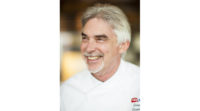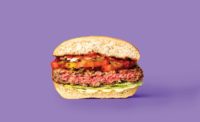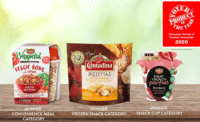Q&A with Emmanuel Oh, Nestlé Professional
A chef's perspective on hot beverage trends, tastes




Prepared Foods talks hot beverage trends with Emmanuel Oh, a corporate chef at Nestlé Professional in Solon, Ohio. Oh earned a bachelor’s degree in chemistry from Ohio State University and an associate’s degree in Baking and Pastry from The Culinary Institute of America. Nestlé Professional is a division of Nestlé, the world’s largest food and beverage company. Its food and beverage portfolio includes Minor’s, Stouffer’s, Chef-mate and Trio foods to beverage systems under NESCAFÉ, Nestlé Vitality and Coffee-mate brands.
Prepared Foods: Nestlé Professional has a wide portfolio but what’s new involving hot beverages?
Chef Emmanuel Oh: Earlier these year we launched a new brewer. This NESCAFE bean-to-cup equipment delivers to growing consumer demand by creating specialty beverages and allowing operators to serve barista-quality coffees, in an instant; even if you aren’t a barista. In conjunction, we developed two, trending specialty coffee beverages: the flat white and café con leche, which have both significantly grown on menus over the past four years. Consumers can enjoy a specialty coffee, made with fresh ground beans, even when there isn’t a barista on staff!
PF: Can you tell us more about your R&D process and fitting it to operator and consumer needs?
Oh: When coming up with products, recipes and support material, it is always important to think about how the product will fit operator usage and customer consumption. Does it have the right mouthfeel? Does it hit different aspects of taste (i.e. – sweet, sour, salty, umami, bitter)? Is it easy for the operator to use in different applications, can they make desserts, bar drinks, specialty coffees, cold beverages, and so much more! Operators no longer buy ingredients or products with only one application anymore. We have to think value and versatility. We ask, “Can it be used by any member of the staff, both front and back of the house, without much training?”
As you might imagine, the biggest question operators have really comes down to cost. This is where it’s key to utilize food science within foodservice. Requirements here include knowing and understanding the ingredients available, ratios to retain flavor during, storage and shelf life needs, skill levels for use, nutritional considerations and so much more. These all factor into creating a product operators want for their consumers.

PF: How do you think about consumers and hot beverage occasions?
Oh: More than 40% of people still don’t know what’s for dinner after work these days—even as we’re experiencing stay-at-home orders and our options for dining out have shifted. If restaurants offer the right options, people will pick them and their menu when deciding a place to eat out or take home. People are stressed and they want to indulge! They want to relax, they want a frothy, creamy, rich cocoa or coffee drink to help them unwind from the world’s anxiety. If you can a little shot of liquor or alcohol and some whipped cream and cocoa shavings—that’s even better to soothe their souls!
PF: Where do you go for inspiration with hot beverages?
Oh: I go to social media, trend reports, and even sometimes flavors I might crave myself for inspiration. I talk with other chefs, I read articles on what’s up and coming. And, working for Nestlé, I have the unique availability of authentic global flavors to play with.
We get to hear about trends and upcoming techniques before anyone else. Finally, as a trained pastry chef, I get to pair delicious desserts and even savory treats with rich, creamy coffees, teas and cocoas to make decadent, indulgent menu items that are worthy of celebrations big and small.
PF: Is there a hot beverage ingredient or product element, such as texture, that’s captured your attention?
Oh: I am still excited about all the ways you can use tapioca balls or boba. You typically see them in cold/iced beverages but, I find it’s even better when used in hot applications. The texture becomes more like mochi and it retains some of the sweetness from the brown sugar syrup it sits in.
PF: What trends do you see influencing hot beverages during the next 12 to 18 months?
Oh: Given the unprecedented challenges that 2020 has introduced to the foodservice industry, I’d say elements of portability, comfort and convenience are all very important right now. I expect flexibility will carry over into next year, and maybe beyond. Operators are looking for something easy to make, that travels well in takeout containers, stays hot or cold as needed—and offers consumers delicious, convenient comfort.
Coffee is a trend on the upswing. If you can offer responsibly sourced coffee, single-sourced beans, and specialty blends, it makes people more likely to give it try. If operators offer a coffee—paired with a decadent, sharable dessert or a savory snack for an afternoon energy bite—it’s very likely that consumers will add on a dessert or snack!
Another trend I don’t see going away is the meal kit or “at-home-chef” option. If you can add a fun cocoa or coffee recipe or a whitener/ sweetener/ flavored creamer option to round out the meal, consumers feel like they get a little extra in their meal kit. With all the work-from-home and shelter-in-place orders, chefs have the opportunity to create social media content with flavors, techniques, and material that accompany meal kits being prepared at home.
Looking for a reprint of this article?
From high-res PDFs to custom plaques, order your copy today!







